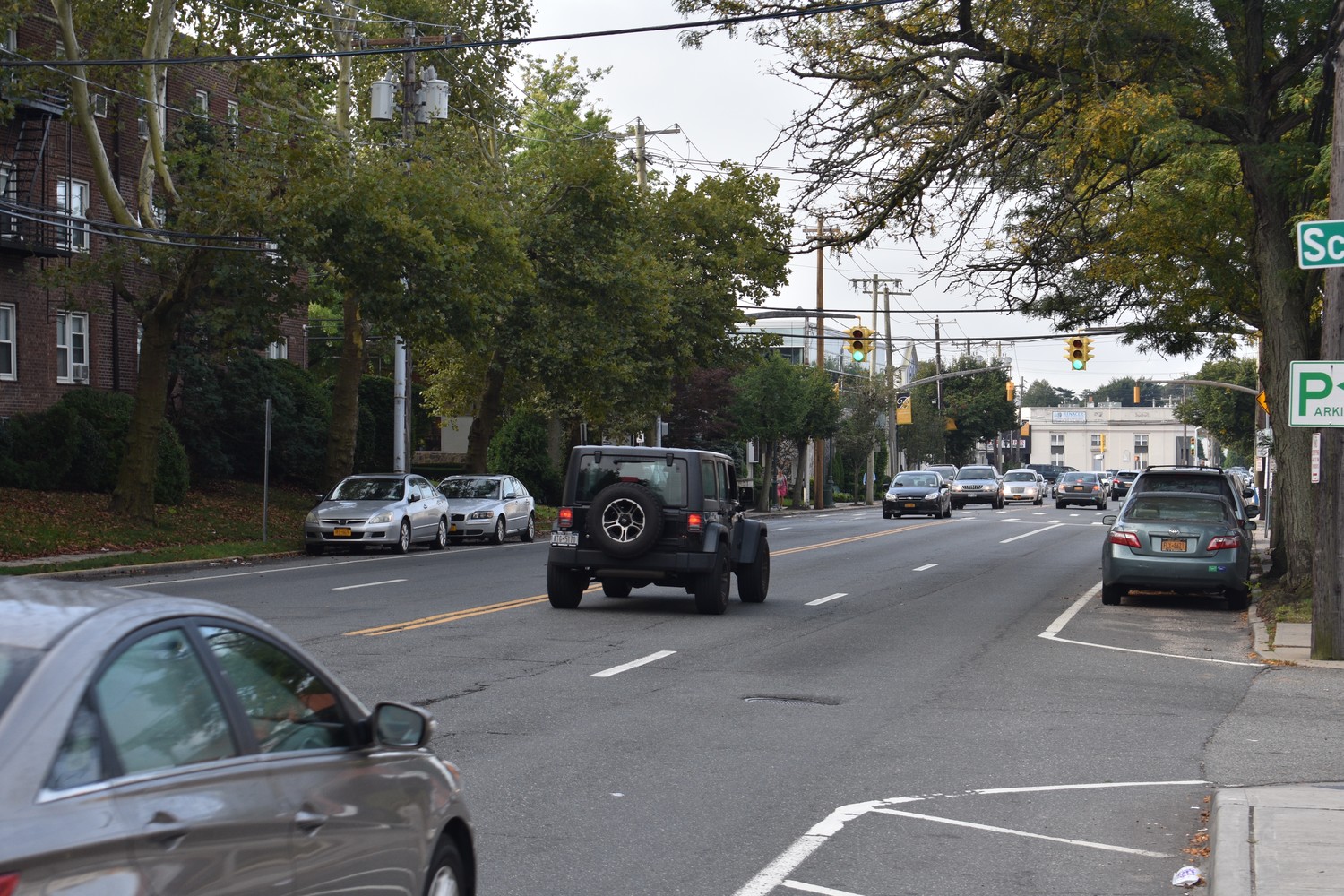First Precinct sees no issues with ‘road diet’
For months, opponents of the proposed Grand Avenue “road diet” have expressed concerns that the project would hinder response times for emergency personnel. But Nassau County Police Department Deputy Inspector Robert Fitchett, the Baldwin-based 1st Precinct’s executive officer, said that would not be the case.
Speaking at a town hall meeting on Jan. 24, Fitchett said that police regularly deal with new traffic patterns, and he did not foresee the planned reduction of Grand in some areas from four lanes to two as potentially problematic for officers. “We always get to where we need to go,” Fitchett said. “One way or the other, we’re going to get there.”
He added that police are often already in the community when they receive a 911 call, and may not need to take Grand Avenue to reach an emergency. “We’re not always at the stationhouse,” he said, referring to the 1st Precinct’s Merrick Road headquarters.
The NCPD would not offer a formal opinion on the plan, part of a “complete streets” initiative that also includes curb extensions and crosswalks at certain intersections. The Baldwin Fire Department is reviewing the proposal.
Some residents remained convinced that the “road diet” would cause problems for first responders. Jack McCloy, a vo-cal opponent of the plan, pointed to a recent op-ed in The Wall Street Journal that argued that similar projects across the country have left police officers and firefighters stuck in traffic during emergencies.
Transit advocates called the op-ed, authored by Los Angeles attorney Christopher LeGras, misleading and, at times, inaccurate. LeGras wrote that a road diet on Foothill Boulevard in Los Angeles led to bottlenecked evacuations as residents fled the 2017 La Tuna wildfire. But transit activist Ted Rogers, who writes for bikinginla.com, said the congestion on Foothill resulted from closure of the 210 freeway during the fire, and not the road diet.
Baldwinite Robert Keuglin said he believed the project would lead to traffic jams on Grand Avenue. “I really don’t see how this is going to work,” he said.
Nassau County officials have said the project would reduce speeding on Grand, but that it would not lead to increased travel times.
A number of residents support the plan. Lisette Bernal-Cruz said she would feel safer walking along the road as it has been proposed, more so than it is now. “I used to walk to the train station every day with a stroller,” she said, “and I didn’t think it was safe. It was a little scary crossing the road. This, I like.”
She said the curb extensions, also called bump-outs, should have been installed years ago. “It [would give] you a little better view of the oncoming traffic,” she said. “I think that’s great.”
Resident Silvana Diaz said she has not seen much speeding on Grand, but said the road diet could make downtown Baldwin look more appealing. “I think it would be a nice thing for Baldwin,” she said.
Nassau County officials have said reducing the speed on Grand could help to improve businesses’ visibility along the corridor.
Diaz said she would like to see the addition of a bike lane just north of Sunrise Highway, which could be added under the complete streets proposal. Keuglin, a motorcyclist, said there are not enough bicyclists to warrant a bike lane on Grand.
If the road diet were approved, the lane change would begin roughly 400 feet north of Merrick Road and continue to about 480 feet south of Sunrise Highway, where it would return to two lanes in each direction. Then, north of Sunrise, Grand Avenue, from Smith to Florence streets, would have one lane in either direction with a center-left turn lane.
County Legislator Debra Mulé, a Democrat from Freeport, and County Executive Laura Curran, a Democrat from Baldwin, have both expressed their support for the proposal.

 48.0°,
Overcast
48.0°,
Overcast 




